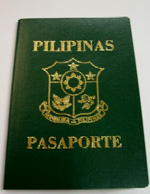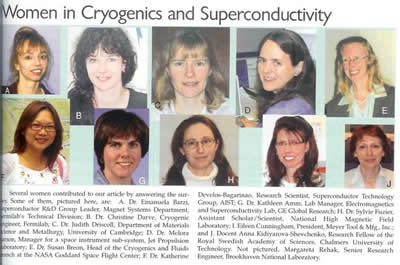Have you ever applied for renewal of your passport? How about having it amended from your single name to your married name? Was it as simple as 1-2-3?

Because I live in Tsukuba, I am under the jurisdiction of the Philippine Embassy in Tokyo. Here, we can apply for passport renewal by mail. Yep, no need to appear in person at the Embassy. Hurray. All we have to do is submit our application by mail, and as long as our documents are complete and in order, we can expect our new passports to be delivered through the post office or takkyubin. As simple as that.
However, what I had expected to be a simple process could get pretty complicated sometimes. Read my “tales” below and judge for yourself. Pray, tell, was I amiss?
The One with the Passport Amendment
I got married in January 2001. My passport was expiring in March of that year, too. During that time, as far as I could tell, the Embassy still didn’t have any website that I could consult regarding passport procedures. So I sent a letter to the Embassy, inquiring about the required documents that I have to submit. This is the body of the letter that I sent, dated February 6, 2001:
I have to renew my Philippine passport which will be expiring next month. For this matter, I would like to request for an application form and other relevant information regarding the application process. I would also like to inquire what documents I need to submit if I would change my name because I recently got married. I would appreciate it very much if you could kindly send these by mail. I have included a self-addressed, self-stamped envelope with this letter.
Thank you very much for you kind accommodation.
Clear enough, eh? After several days, I received a copy of the application form, as well as a list of requirements that I needed to submit. I prepared everything, and submitted the documents on February 26, 2001.
However, even after about a month of waiting, still no passport. What happened? There was absolutely no attempt on the part of the Embassy to contact me if there was anything amiss with regards to the documents I submitted. By this time I was getting anxious, understandably enough, because my passport would be expiring in a few weeks. I tried to follow up by phone, but as you can read below, it availed to nothing. Read all about it in my next letter, dated March 21, 2001:
This is a follow-up letter regarding the application for passport renewal which I have sent by registered mail last February 26, 2001. Exactly a week ago I called up your office, but unfortunately could not get any direct answers from the person I talked to. Apparently there seemed to be no way to trace the status of the current application, because, as the person said, they were receiving up to 50 applications per day that they could not accommodate my request. Instead, I was directed to the “Personnel” department and from my conversation with the person there I was told that they have not received my processed passport yet. From there I was redirected back to the passport division, but I only got the answering machine. I was led to believe that it was all an exercise in futility.
Are the data for passport applications not stored in a computer where they could be easily accessed for referencing? It has already been more than three weeks since I have sent my application. My passport number is XXXXXXXX with expiration date March XX, 2001. It is very urgent that I get my new passport since I am also applying for a name change due to my recently acquired marital status (Maiden name: ______; I have included the marriage certificate along with the other documents in my application.) Without the passport, I could not make the subsequent changes in my name in all other important matters like the driver’s license, ACR and bank accounts. I would appreciate it if you could, at the very least, inform me of the status of my application for renewal. My sincere apologies if this letter has crossed with the mailing of my passport.
But, no dice. Para lang akong nagpalipad ng sulat sa hangin. Nobody bothered to acknowledge my letter, nor attempted to contact me at all.
I became extremely agitated. How much does it take to renew one’s passport here? Y10,500, or about $100. Surely this would have been enough to avoid the unnecessary aggravation? But I was so dead wrong. So dead wrong.
I gave up on calling the Embassy myself. I mean, what was the point? I would only be passed on to one person to the other – it was indeed an exercise in futility. Enter Baggy to the rescue. I made him call up the Embassy to ask exactly what happened with my application. Between us, he is the more patient one, and he has proven time and again that he is definitely more persistent than I am. Plus, kaya niyang makipagtigasan sa mga tao. Me? Nah, I’m too impatient and I tend to get angry when talking to dumb people.
To make the long story short, after talking to many persons, he finally ended up talking to the Vice-Consul. Matinik talaga si Baggy. 🙂 It turned out that my application lacked one vital thing – an authenticated marriage contract. Huh? I didn’t even know that there was such a process as authentication of a document. Turned out that this had to be processed in the Philippines, not Japan! Sheez! Now why didn’t they tell me that in the first place? And why was my application left to languish for more than a month? Time’s a-wastin’, and if I hadn’t taken the initiative to follow-up my application, I wouldn’t even have known about that document. Whoever sent me the list of requirements overlooked the fact that I was married in the Philippines, not Japan, and that I am married to a Filipino, not a Japanese. Why? Your guess is as good as mine.
And so what happened was that since there wasn’t enough time left before my old passport expires, I was issued a new passport using my maiden name. I was advised to submit the authenticated marriage contract and apply for the amendment of my name later on.
That was exactly what I did after several months of waiting (the marriage contract issued by the NSO (National Statistics Office) had to make the rounds of Malacanang and DFA to be authenticated). While I was able to get the amended passport without any setbacks, I still had to pay an additional amount of Y5,250 for them to “process” my request for amendment.
In fairness, when I applied again for the renewal of my passport early this year, surprisingly I didn’t encounter any problems. Nowadays you can consult the Embassy’s website for information regarding passport renewal and other matters. I got my new passport by mail after two weeks. So, some things can change after all! 🙂
The One with the Passport Renewal
I almost believed that things have changed for the better. But now comes Aya’s turn to have her passport renewed. I prepared the usual documents. I checked and double-checked everything; I downloaded the application form from the Embassy’s website. The application form comes in two pages – the first page being the application form itself, the second page bearing the details of documents to be submitted. Here is what it says on the renewal of passport:
Renewal of Old Passport
1. Duly accomplished passport application form available at the Consular Information Counter, or downloadable from the official Embassy website at http://www.tokyope.org.
2. Three (3) passport-size photos;
3. Old passport – to be presented for cancellation but will be returned to applicant;
4. Copy of the following pages of old passport:
a. data page (1st page)
b. visa page (with latest visa)
c. page bearing the signature of the signing officer (last page)
*If old passport is a brown passport, submission of an authenticated Birth Certificate from the National Statistics Office (NSO) is required.
Renewal Fee: ¥10,500
Additional Documents for Seamen:
1. Certification from the corresponding shipping agency in Japan or from the ship master;
2. Philippine Seaman’s discharge book
3. Landin permit from immigration
So I submitted Aya’s application, confident that everything was complete. Unfortunately, after a week, all the documents were returned to me, with a stick-on note stating:
PLS. SEND COPY OF MOTHER’S PASSPORT CONTAINING THE FF. PAGES:
PAGE BEARING THE NAME, LATEST VISA, AND SIGNING OFFICER
What the?!! ASAN YUNG INFORMATION NA YAN? It’s not just my time and effort that was wasted, mind you. From the Y10,500 that I sent, only Y9,400 was returned to me; the bills and coins were taped together and simply inserted into the mailing envelope that was sent back to me (huh? They can do that? I thought sending money through the mail has to follow the appropriate procedures? The very reason why we use a genkin kakitome envelope – the official and legal way of sending money through the post office? D’oh!). Apparently, the amount of Y1,100 was subtracted and used to pay for the sending of my documents through registered mail.
So what else can I do? I know it’s futile to argue, but I wrote them a letter anyway. I like writing letters – it allows me to express myself whilst documenting everything. And I was actually hoping that I’d push the right buttons for someone to answer me this time. Together with the documents, plus a copy of MY passport pages that they requested, I sent the following letter:
It was truly a total waste of effort, money, and time on my part to submit documents that were deemed incomplete by your office. It was a complete shock for me to have my documents and money (minus the postage fee) returned, with a simple note that says that I have to supply additional documents for my daughter’s passport renewal. After all, I followed to the letter the information available at your website.
All of these would have been avoided had you taken the effort to update the information you have posted in your website. There is absolutely NOTHING there that says that for a child’s passport renewal, copies of pages of the mother’s passport are still necessary. If there is, then by all means please let me know where I would be able to find it, and that I may advise other parents to do the same.
As with the first time, I paid for registered mail fee, plus the fee for the genkin kakitome (cash registered mail), amounting to a total of Y1,140.
After two weeks of waiting, Aya’s new passport finally arrived. Along with her new passport was the letter that I sent. No replies, no nothing. They just returned my letter. Gee, thanks for ignoring me. Hey, I am a nobody, I just happen to be a Filipino national, and I am absolutely NOT entitled to any attention from my own embassy. Gah, I suck at being sarcastic. Honestly, I do not expect any apologies; I am not even concerned about the money. I just want CLARIFICATION. I want somebody to explain things to me like I’m a four-year old.
The way I see it, the least they can do is update the information on their website so that parents out there who are going to renew the passports of their children would know exactly what documents to send. Or was our case special? How on earth would I know that anyway?
Again, let me ask you – was I amiss? You be the judge!












 Well, there is a particular topic that I want to write about in this post. Thing is, I’m turning a year older tomorrow. It’s no big deal, right? 🙂 Everyone else will turn a year older this year. But for some reason, I’m having a “When Harry Met Sally” reflective moment. Ok, sure, 40 is still several years down the road, but hey, I will turn 40…someday! To paraphrase Sally’s outburst: “Forty…it’s just there, waiting!”The big four-oh is hurling towards me, like it or not. Some people I personally know are already ranting about turning 40 – and for some reason, they end up buying themselves some expensive stuffs. Maybe to make themselves feel better? Is it really that bad? I couldn’t help but think that pretty soon, our batch in college will be writing emails with similar angst about turning 40 in our mailing list.
Well, there is a particular topic that I want to write about in this post. Thing is, I’m turning a year older tomorrow. It’s no big deal, right? 🙂 Everyone else will turn a year older this year. But for some reason, I’m having a “When Harry Met Sally” reflective moment. Ok, sure, 40 is still several years down the road, but hey, I will turn 40…someday! To paraphrase Sally’s outburst: “Forty…it’s just there, waiting!”The big four-oh is hurling towards me, like it or not. Some people I personally know are already ranting about turning 40 – and for some reason, they end up buying themselves some expensive stuffs. Maybe to make themselves feel better? Is it really that bad? I couldn’t help but think that pretty soon, our batch in college will be writing emails with similar angst about turning 40 in our mailing list.